About five centuries back, the Mughal emperor Akbar sent out a request to Jesuit priests stationed at the Portuguese enclave of Goa to teach him about Christianity. Whether he wanted to learn about the religion of Christ out of personal interest or for the sake of picking out suitable material for his new religion, ‘Din-I-Illahi’, is hard to tell. However, what got initiated was an elaborate process of cultural exchange culminating in a collection of glorious artistic pieces consisting a combination of Persian and European motifs.
Jalal-ud-din Muhammed Akbar King by God appointed

Chief fathers of the order of St Paul know that I am your great friend.
I am sending thither Abdullah my ambassador and Dominic Pires to ask to ask you to send
me two learned Priests, who should bring with them the Principal books of the Law and
the Gospel so that I may leam the Law and what is most perfect in it.
Akbar’s invitation came as a big surprise to the Jesuits who saw in it an opportunity to teach the laws of Christianity to the Muslim rulers of north, with the expectation that they would convert. They immediately arranged for translated volumes of the Bible, and several pieces of art from Europe reflecting Christian imagery.
 A painting depicting religious discussions in Akbar’s Ibadat Khana, (Wikimedia Commons)
A painting depicting religious discussions in Akbar’s Ibadat Khana, (Wikimedia Commons)
The very first paintings to reach the Mughal court were large oil paintings of Mother Mary, a religious figure known to the Muslim world, by her presence in the Quran. The Jesuits then presented the Royal Polyglot Bible to Akbar, with Biblical illustrations done by a Flemish painter. As per historical chronicles, Akbar was so moved by the imagery in the Bible that he knelt down in front of the picture of Christ and Mary and venerated thrice in Christian, Muslim and Hindu fashion.
The Mughal emperor was moved by the religious sentiments in the European artworks, but had no intention of converting to Christianity. Rather, he saw the use of non-Mughal motifs as perfectly suitable to demonstrate the supremacy of the Mughal empire and their universal right to rule. Renaissance art with its emphasis on humanist values and realism was at its peak in Europe of the 16th century and it reflected in the Biblical images of the time as well. The themes of these paintings, having a universal appeal, were seen as ideal by the Mughal rulers to justify their rule in a foreign land with multi-religious subjects.
Akbar’s court painters like Kesu Das, Manohar, Basawan and Kesu Khurd were the most inspired by the European motifs and produced paintings with Christian themes and characters. Later, the tradition of drawing on to Christian motifs was carried on by Jehangir and later Mughal rulers as well.
Story continues below this ad
 Mother Mary and Child Christ, mid 18th century (National Museum, New Delhi)
Mother Mary and Child Christ, mid 18th century (National Museum, New Delhi)
 Martydom of St. Cecilia by Nini, 17th century. (Victoria and Albert Museums)
Martydom of St. Cecilia by Nini, 17th century. (Victoria and Albert Museums)
 Mother and child with a white cat: Folio from a Jahangir album, attributed to Manohar, 1598 (San Diego Museum of Art)
Mother and child with a white cat: Folio from a Jahangir album, attributed to Manohar, 1598 (San Diego Museum of Art)
The Indian origin of the paintings is evident from the use of Mughal motifs and native scenes in them. Several of them drew upon familiar images of Indian Goddesses to create European characters. There were several such pieces of art that consisted of images of Mughal rulers with Biblical characters in the murals above, therefore serving the purpose of religious justification for Mughal rule.
The 17th century painting Jahangir presents Prince Khurram with turban ornament is a perfect example of art showcasing Mughal rule with imagery borrowed from Christianity. In this case, the motifs can be traced to the Polyglot Bible. A close look will reveal the top murals being occupied by Biblical characters.
 Jahangir presents Prince Khurram with a turban ornament, 1617 (Royal collection trust)
Jahangir presents Prince Khurram with a turban ornament, 1617 (Royal collection trust)
 Jahangir and Jesus, 17th century (Wikimedia Commons)
Jahangir and Jesus, 17th century (Wikimedia Commons)
Even more astonishing are the royal commissions for making murals with Christian figurines in Mughal royal palaces. Jahangir’s murals of public saints first appeared in the Agra fort, surrounding the Emperor’s throne. Later, such murals were commissioned in courts of Lahore and Mandu as well. Images of the saints were always arranged in rows in the upper register of the walls or the ceiling. Interestingly, the Christian images were never on the exterior of the buildings, perhaps to avoid offending the religious sentiments of the general public.
While Christianity had been received and adopted in several other countries before it came to India, the religion’s reception here was unique in the sense that it was accommodated in a manner serving the interests of the Mughal rulers. But in so doing, the Mughals made known to native Indians, Christian values and traditions that the country would go on to celebrate for centuries to come.
Story continues below this ad



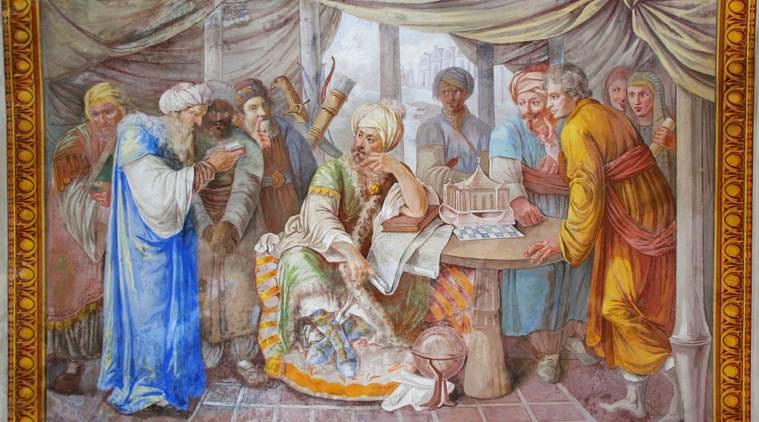 A painting depicting religious discussions in Akbar’s Ibadat Khana, (Wikimedia Commons)
A painting depicting religious discussions in Akbar’s Ibadat Khana, (Wikimedia Commons)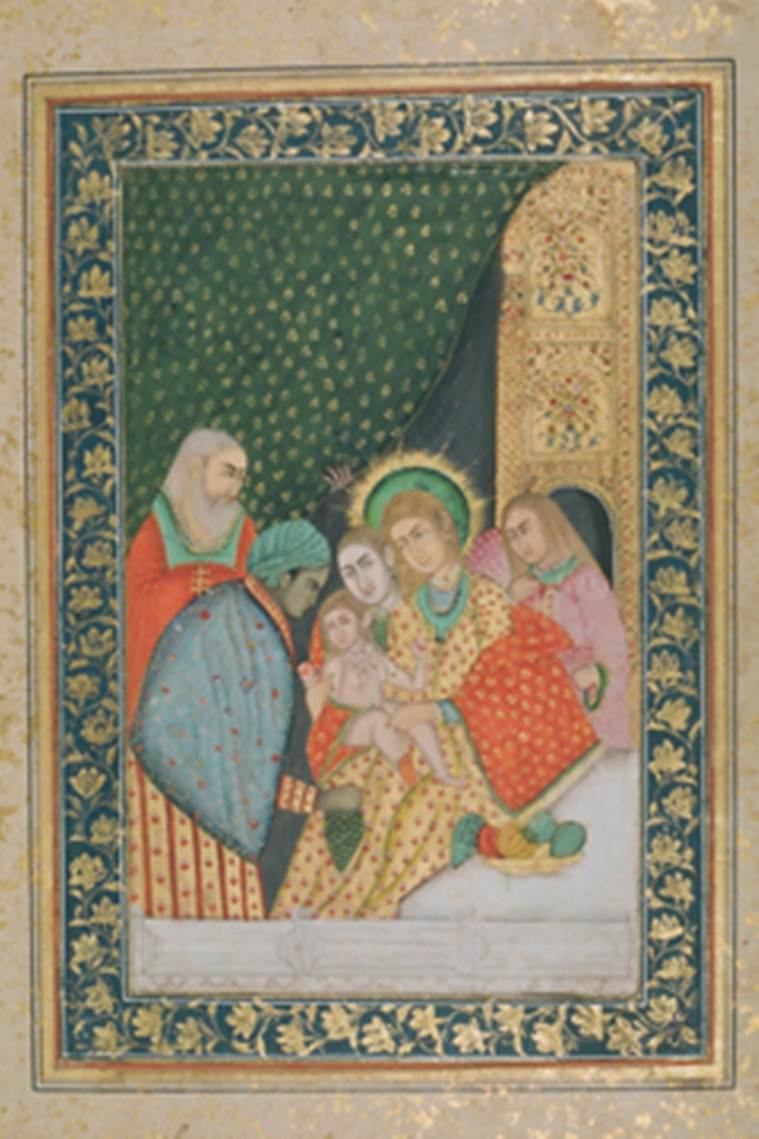 Mother Mary and Child Christ, mid 18th century (National Museum, New
Mother Mary and Child Christ, mid 18th century (National Museum, New 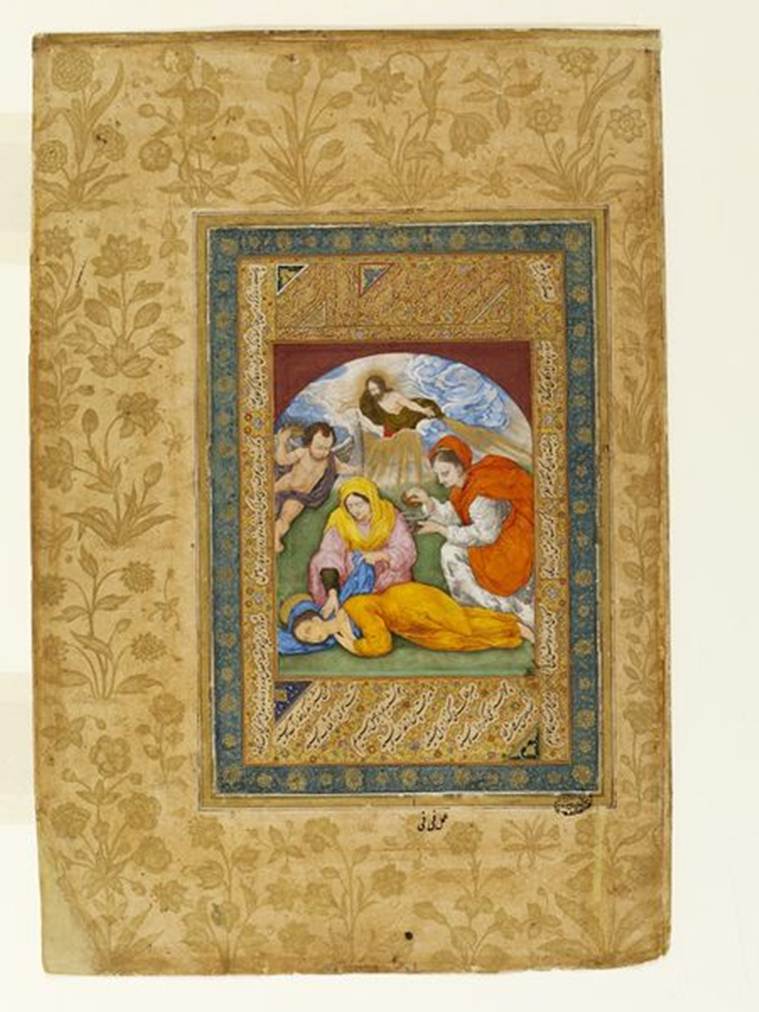 Martydom of St. Cecilia by Nini, 17th century. (Victoria and Albert Museums)
Martydom of St. Cecilia by Nini, 17th century. (Victoria and Albert Museums)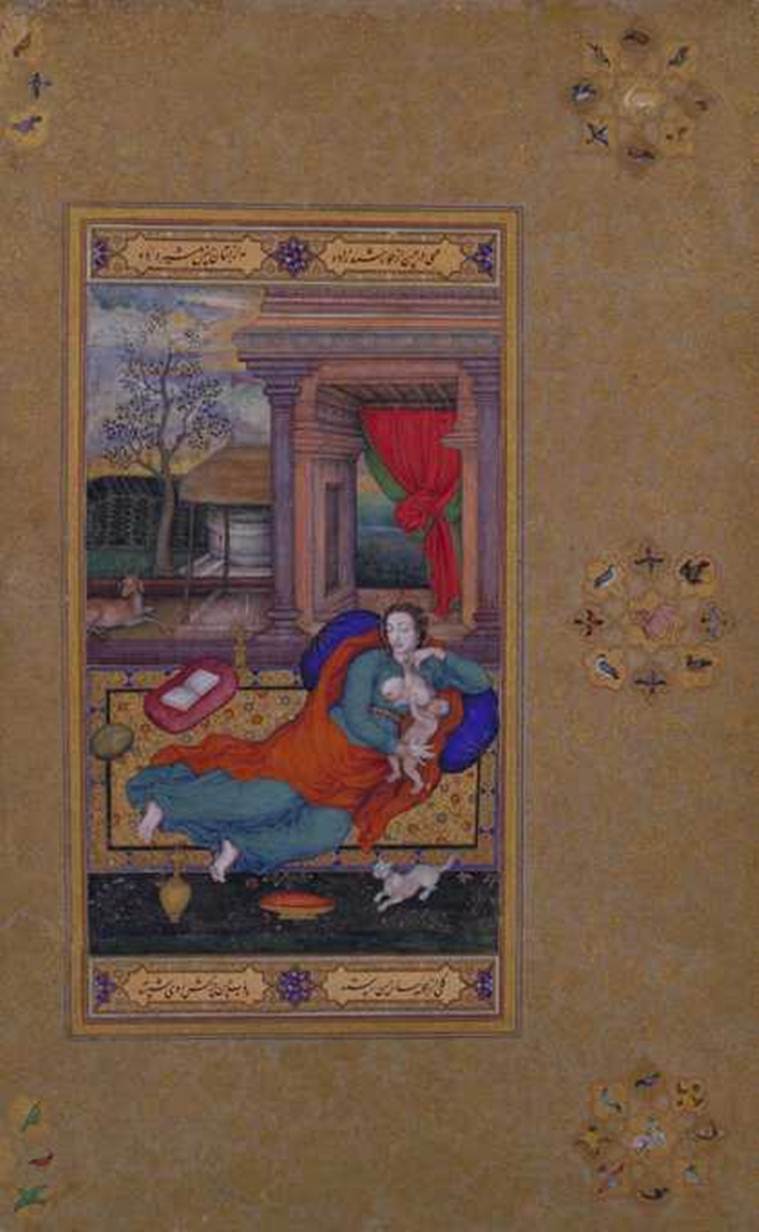 Mother and child with a white cat: Folio from a Jahangir album, attributed to Manohar, 1598 (San Diego Museum of Art)
Mother and child with a white cat: Folio from a Jahangir album, attributed to Manohar, 1598 (San Diego Museum of Art)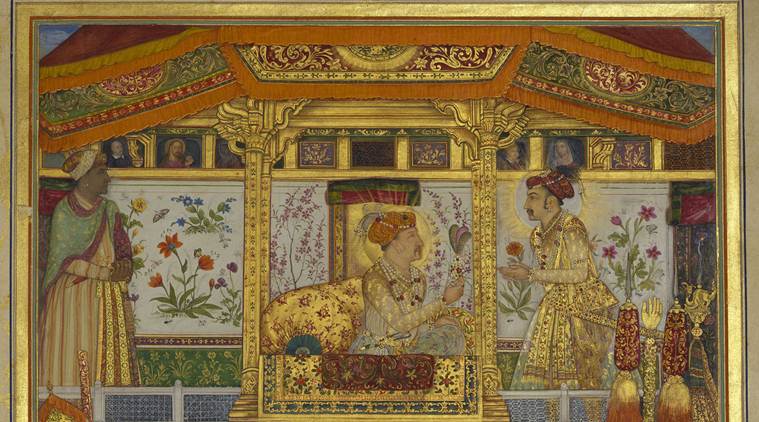 Jahangir presents Prince Khurram with a turban ornament, 1617 (Royal collection trust)
Jahangir presents Prince Khurram with a turban ornament, 1617 (Royal collection trust)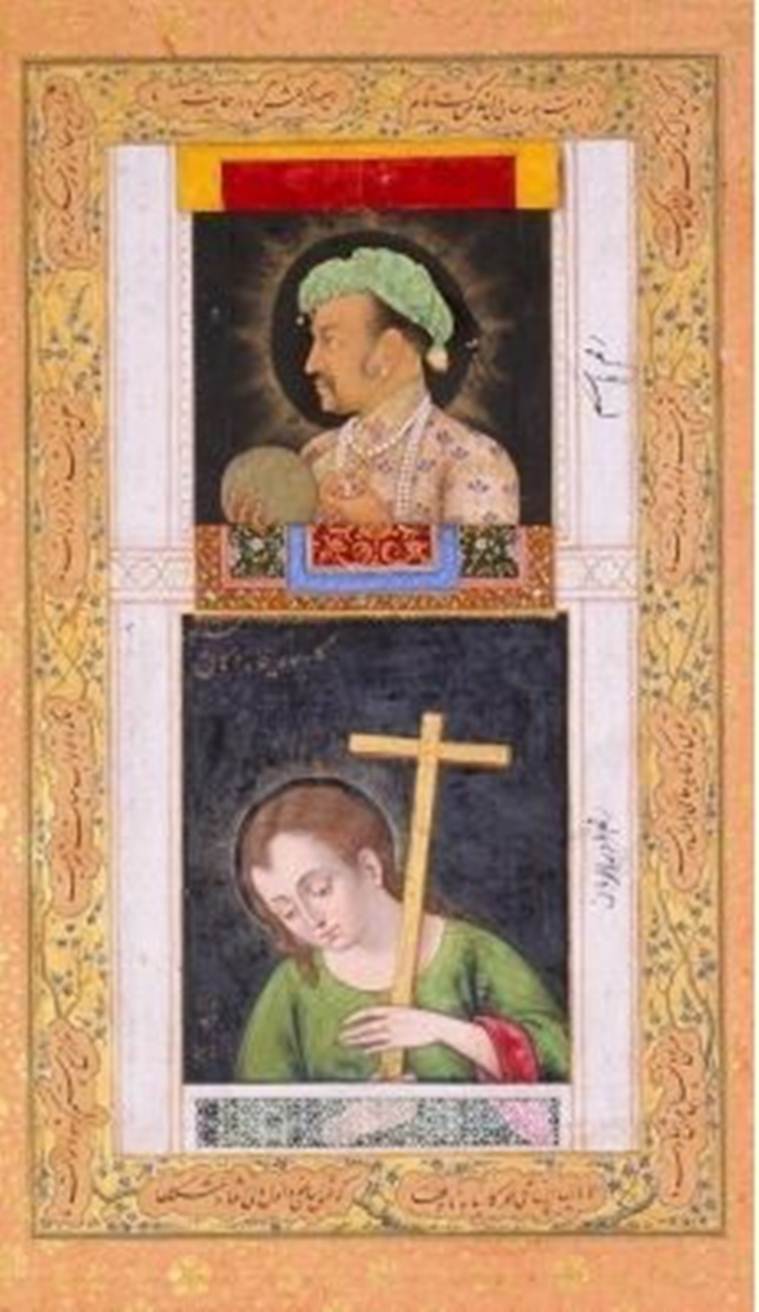 Jahangir and Jesus, 17th century (Wikimedia Commons)
Jahangir and Jesus, 17th century (Wikimedia Commons)





























